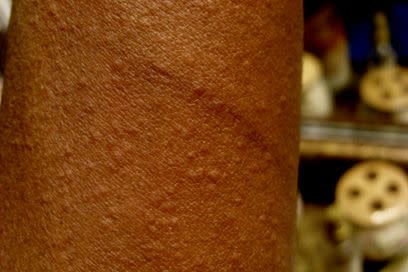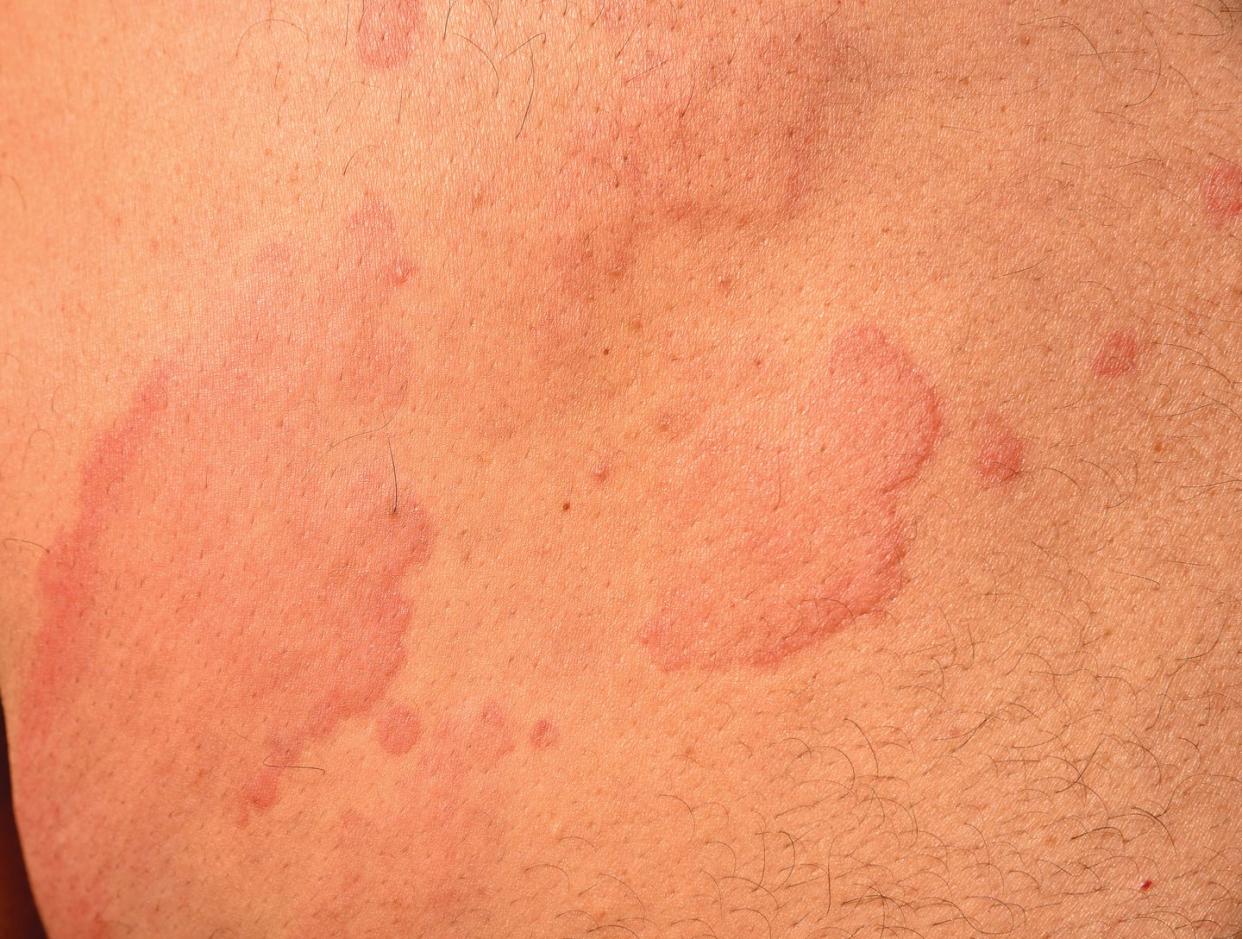Think You Have Stress Hives? These Photos Will Help You Figure It Out
There are more reasons than ever for people to be stressed out right now. Unfortunately for some, that increased stress can present physically. Those suffering from higher-than-normal stress levels may also experience increased blood pressure, poor sleep habits, or even a red and itchy rash known as stress hives. While stress rashes are usually quite manageable at home—there are many over-the-counter treatment options for sufferers looking to get some relief—they’re still concerning.
Here’s what you need to know when dealing with stress hives, including how to identify them and what you need to do to get some relief.
Can stress cause hives?
In short, yes. When you are under stress, Naomi Jean-Baptiste, M.D. (AKA: Dr. JB The Metaverse Doc) says your body releases histamine. “Histamine then travels into your small blood vessels (capillaries) and causes inflammation,” she says, adding that it can make those vessels enlarge (or dilate), which results in welts and swelling of the surrounding tissue.
Another common stress rash culprit is Cortisol, according to Jeffrey T.S. HSU, M.D., F.A.A.D. “Higher levels of Cortisol can cause inflammation as well as triggering histamine to release, which in turn can cause hives,” he explains.
Some people are more prone to experiencing stress hives, including those with eczema, psoriasis, and rosacea, according to Akis Ntonos, nurse practitioner and co-founder of Aion Aesthetics, a New York injectables clinic.
While some people may have a pre-existing condition that makes stress hives more common—in addition to the things Ntonos mentioned, Dr. Jean-Baptiste adds that people with environmental allergies (like pollen and animal dander) and women between the ages of 30 and 50 can be at an increased risk—she says anyone can experience them.
Stress hives pictures and what they look like
Stress hives can look similar to other types of hives, and normally present as red welts of varying sizes on the surface of your skin. “They can be located on any part of your body,” says Dr. Jean-Baptiste. “Oftentimes they can itch, burn, or even hurt. They look similar to the kind of rash you get when you are experiencing an allergic reaction to a food, medication, or other chemical exposure.”
They might even look like bug bites. “At first glance, they can look like bug bites,” Dr. Hsu says, adding that they can also have a red ring around them. “They are generally about one to two centimeters in size but can combine with other welts to create larger patches of hives or what may look like a very large hive.”


How to treat stress hives
Dr. Hsu says over-the-counter allergy medicines—specifically antihistamines—like Claritin, Allegra, or Zyrtec can reduce the severity of hives, in some cases completely retracting them. “Antihistamine help to block the histamine pathway from forming new hives,” he says, adding that you can do this daily for as long as your symptoms last. “However, if your hives last longer than three months, you should see a dermatologist or allergist for more treatment options.”
Additionally, if you experience any signs of systemic hypersensitivity, such as finding it hard to breathe or a swollen throat, Dr. Hsu says you should head straight to the emergency room.
Dr. Jean-Baptiste adds that there are a few other signs that mean you should make a trip to the ER, including:
Swelling in your lips or tongue
Changes in your voice
Difficulty swallowing your saliva
How to get rid of stress hives
Reduced stress is the best defense against a stress rash, according to Ntonos. “Stress management is an excellent initial step,” he says. “You can achieve this in a variety of ways, including by obtaining adequate sleep each night, avoiding stressors outside of your control, and routinely practicing stress reduction practices.”
Ntonos suggests trying some stress-reduction techniques like yoga, meditation (try our simple guide on how to start meditating), and working out. “Clearing your mind and agenda can truly make a difference!”
Speaking of clearing your agenda, if tasks have you bogged down Dr. Jean-Baptiste suggests dialing back your to-do list. “Try to offload some of your tasks through delegation if possible. Otherwise, go for a walk, change scenery, meditate, take a relaxing bath or drink some warm and soothing tea,” she says.
You Might Also Like
